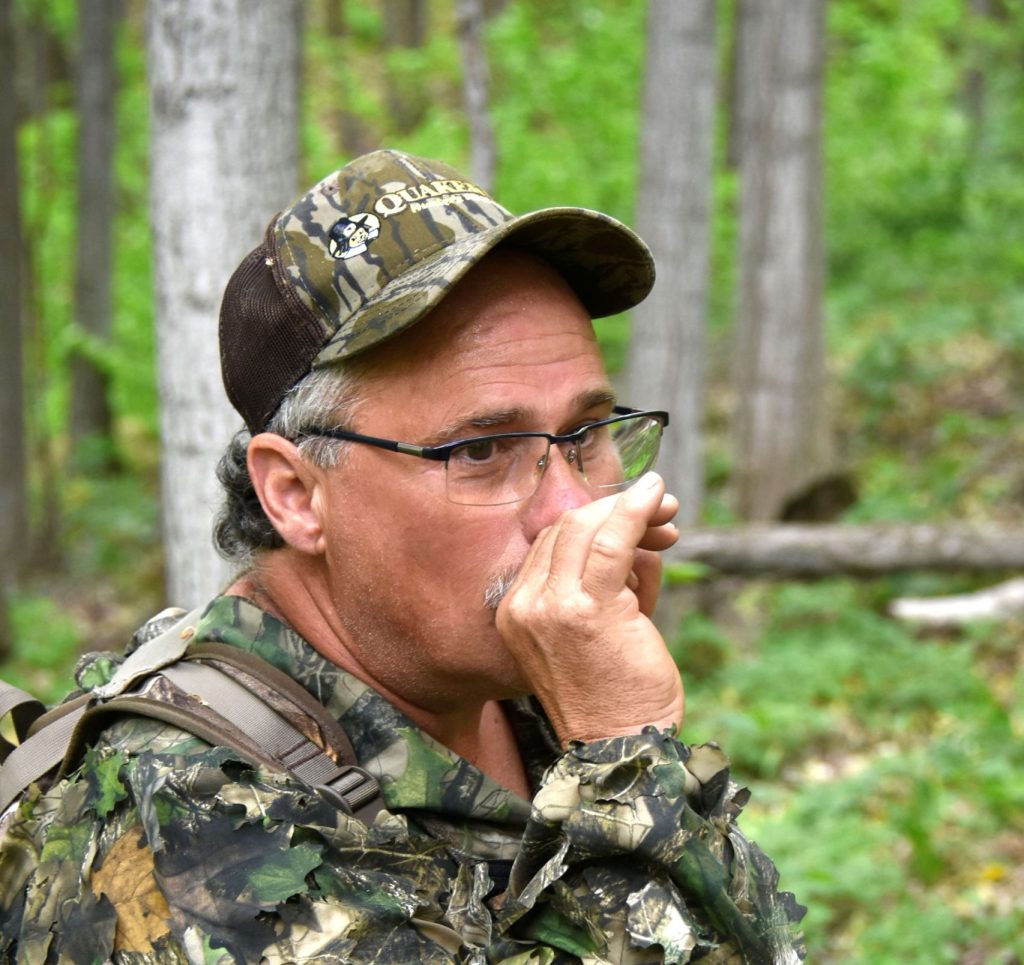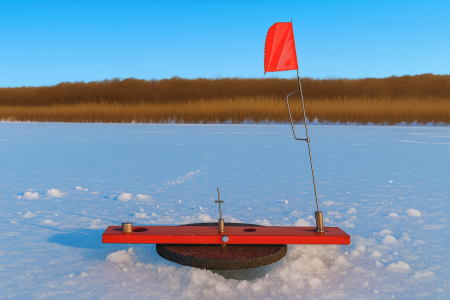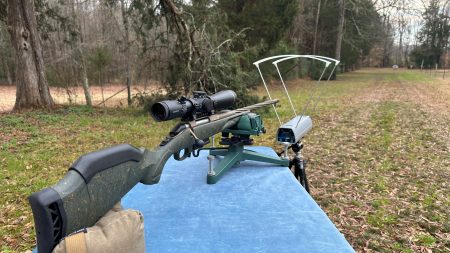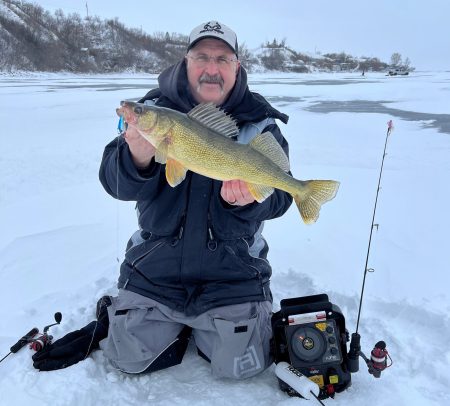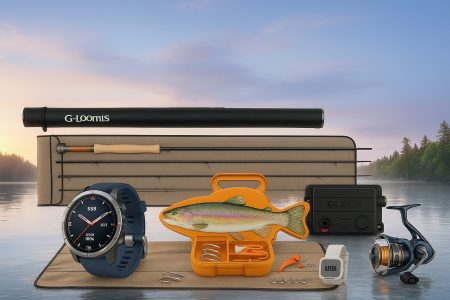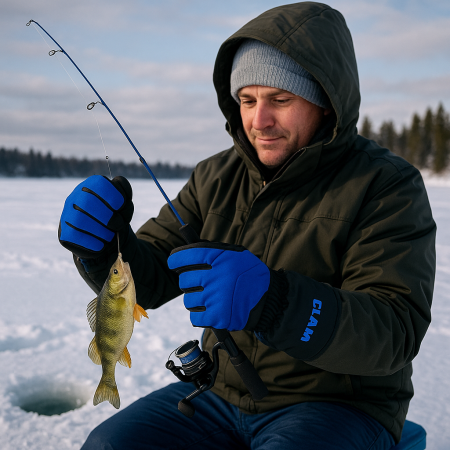Why use mouth calls for hunting turkeys
If you aren’t using a turkey mouth call for hunting – at least part of the time – you are missing out. Mouth calls for turkey hunting are a love-hate thing: some people love them while others hate them.
Even if you like your pot call or box call, learning to make a cluck on a turkey mouth call can help you kill more turkeys. Quiet purrs and clucks often help finish off a gobbler that’s hesitating, but a cluck is also vital to get a gobbler to stop and raise its head to get a clean kill shot– most of the time anyway. And if looking for more reasons to use a turkey mouth call, just about everyone who has hunted turkeys for a long time and uses a friction call has been busted with a call in their hand instead of a gun.
Two veteran turkey hunters share their thoughts
“You’re better off with a mouth call because you can call and keep your hands on your gun or bow. There’s always a mouth call in my mouth,” said Ernie Calandrelli, who worked in a variety of roles at Quaker Boy Game Calls and was part of many instructional CDs the company produced on calling.
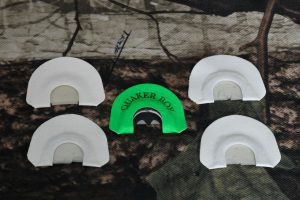
Ontario resident Adrian Hare is a Quaker Boy pro staffer and has taught many turkey hunters to call through seminars at outdoors shows. “Turkey Mouth calls have been my thing ever since the first time I went turkey hunting,” he said. “I remember I took a Quaker Boy triple into the woods and made noises. I don’t think I made turkey noises, but a bird gobbled. That’s what got me hooked.”
Construction of a turkey mouth call
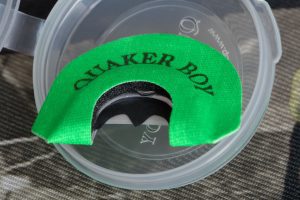
Also called a turkey diaphragm call, mouth calls are made of three parts: the frame, reed and tape. The frame is usually metal or plastic and holds the reeds in place. The reeds can be made of a variety of materials such as latex rubber, prophylactic or other similar material. The tape holds the whole thing together. By varying the number of reeds, and the cuts in the reeds, the raspiness of the call can change.
Choosing the Best Mouth Call
Turkey mouth calls come in one, two or three reed models, with a few models with half reeds containing even more. As a generality, the more reeds, the lower the tone and the more difficult to operate. If the reed is thinner, it has a higher pitch and requires less air to operate. Conversely, thicker reeds have a lower tone and require more air to operate. A thinner reed also produces a quieter call and thicker reeds are typically louder.
A good beginner call is a single or double reed with no cuts. These are also excellent for producing a quiet cluck to get a tom to raise its head when in close proximity to the hunter.
For beginners, Hare said picking the right call to start can make a difference in how easy it is to learn. He suggested a double reed call is a good place to start. “You hear some people say a single is easier, but it’s not because the latex is thicker.”
He also said trimming the call is to fit is a necessity. “Trimming is important. You have to get it back on your palette . If it’s too far forward you get a tickling of the tongue.” Another option for those still challenging a gag reflex after trimming the call is to go to a youth call.
Types of turkey mouth calls
Various manufacturers have different shapes and cuts in their calls, but there are a few that are common to most:
- Cutters are a loud, raspy call with the cut in the side of the top reed.
- Ghost cuts are in the middle of the reed and are a ghost shape. These are a mid-volume call and excel for quiet calling and keekees.
V cuts literally have a notch in the shape of a V cut into the reed. This produces a loud, raspy sound that some more clearly believes better mimics the call of a hen. - Bat wing calls have a cut in the shape of a bat’s wing in the reed. These are also a raspy call.
Quaker Boy 3-Pack has one of each
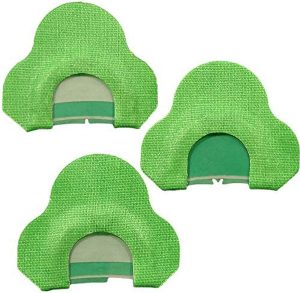
Besides the different cuts, there are some unique designs by manufacturers to make using a mouth call easier for those who are struggling. Quaker Boy’s SealRite style calls have a cushioned frame the company says will fit more mouth palette sizes and shapes. Primos’ Sonic Dome is designed so the call will always be positioned correctly in the caller’s mouth. The dome also has its own sound chamber for a consistent sound.
Calls with no cuts are also versatile for quiet calling and to produce keekee whistles – Quaker Boy Kee Kee call
How to Use a Turkey Mouth Call
The first challenge when using a turkey mouth call is getting used to it being in your mouth. This is simple for some people and a huge obstacle for others. If overcoming a gag reflex is the challenge, try keeping the call in your mouth and practice moving it back into position for a short time until you get used to it. If unable to overcome this, try a youth model call which is smaller. That could make all the difference and turn a mouth call hater into a mouth call lover.
The call should be inserted with the longest reed to the top of your mouth. Another indicator is a bump that is on the frame under the tape. This bump should be facing down in your mouth.
The call needs to seal to the roof of your mouth. Making this happen sometimes requires cutting a small amount of tape off the call. I often need to do this, and I’ll caution you to do it a small amount at a time because the tape can’t be put back on.
Put your tongue against the reeds on the call, and then force air between the reed and your tongue. Most callers like to say words to get the various calls.
Making Clucks and Yelps
While the yelp is the primary call used by hunters, I find it easier to start with a cluck as the first sound. Once the call is in the proper place, say the word puck or buck while exhaling and forcing air over the call. The cluck can also be modified into a cutt or cackle.
The yelp is actually a two-tone call where the beginning is higher pitched. By applying more tongue pressure on the call, it starts the higher note. Then dropping your jaw, creates the lower note. Calandrelli said getting the high and low tone is crucial to yelps. He likes the word shuck for yelping. Hare likes to use the word chee-uk for yelping. The chee is the higher note and uk the lower one.
Why use a mouth call
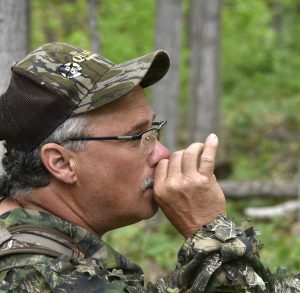
Hare does a lot of running and gunning and finds it works well for his style of hunting. “The mouth call isn’t in the way when you’re moving around,” he said. “I find it’s easier to use a mouth call when you’re moving. It’s easier to use it to do a series of clucks or yelps when it’s in your mouth.”
Calandrelli believes making a cluck or any turkey noise can sometimes assist in the bird raising its head. “Sometimes it works and sometimes it doesn’t,” he said. “If they don’t stick their head up, then I shoot but I try not to shoot them walking.”
Turkey Calling Tips for Rookies and Veterans
Calandrelli said one thing he often notices, and he has to watch himself, is the tendency to elongate yelps. “While sitting there, I have to cut my yelps off,” he said. “Of course, it (shortened yelps) sounds more excited.”
Worried about your clucks turning into alarm putts, the experts had some advice on that.
“A putt and a cluck is the same call, but it’s a different rhythm,” Hare said, explaining a putt is three or four syllables in a row with a space between. “It’s the cadence of the call that makes the difference in the call.” He said it’s vital to learn the meaning of the calls. For instance, a tom coming in sometimes will be clucking away. “He’s trying to get your attention. He’s clucking looking for you.” Often Hare uses clucks intermixed in a series of yelps.
Calandrelli noted alarm putts come in a series. “As long as you don’t have that rhythm, you don’t need to worry, you can putt all you want and a lot of times, it will get them more excited,” he said.
Hare also tries to make each calling series unique, not having the same number of yelps and clucks. “I try to call differently every time I call because you never hear a turkey call the same way twice,” he said.
The key to improving your mouth calling is to practice,. But get tips from online videos, CDs and apps. Looking for a good place to practice without driving the family crazy? The vehicle on the way to work is an underutilized option.
Per our affiliate disclosure, we may earn revenue from the products available on this page. To learn more about how we test gear, click here.






